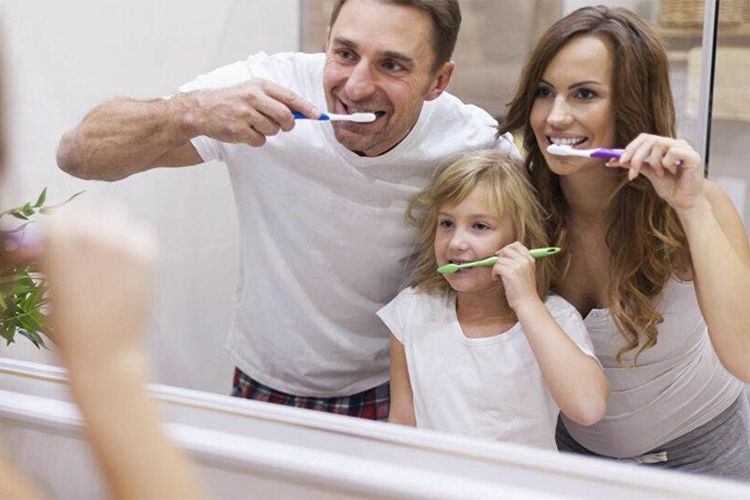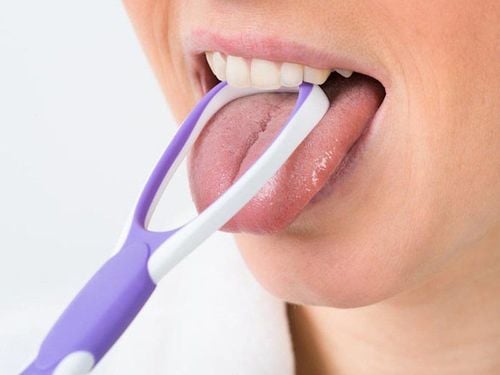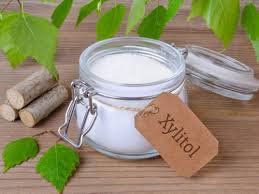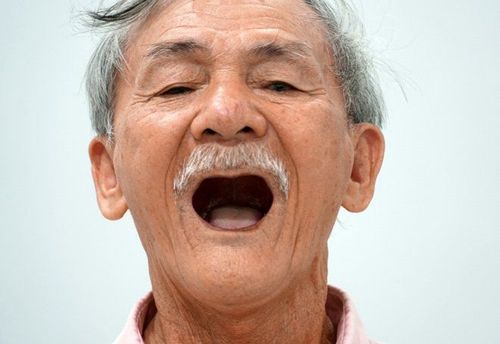This is an automatically translated article.
Eating candies with tooth decay is an inaccurate statement. The truth is that when your baby eats candy, the bacteria that reside in the mouth begin to consume the candy and produce acid as a by-product. This acid dissolves the enamel layer, while the enamel of baby teeth is inherently softer and thinner than permanent teeth, resulting in tooth decay. Thus, it is the product of bacteria when eating candy that damages teeth and causes tooth decay.
1. What is tooth decay?
Cavities are holes in the teeth that can grow larger if left untreated. These areas of permanent damage occur on the surface of the tooth. Cavities are created when there is destruction of tooth enamel due to tooth decay.
Tooth decay can be extremely painful. Besides, the feeling of tooth sensitivity when eating or drinking something too hot or too cold can also be a sign of tooth decay. Cavities are sometimes visible on the teeth. However, as soon as there is pain when chewing, the patient needs to go to the dentist for examination and early intervention, before the tooth decay spreads further.
When bacteria, called plaque, forms on teeth, this is a favorable factor for tooth decay. Children and adults over the age of 50 are especially susceptible to tooth decay, especially when it comes to sweet eating habits and poor oral hygiene behaviour.
2. Why eat tooth decay candy?
Eating sweets in general, candy in particular, can affect general health, so be warned regularly. Candy can come in many forms, from lollipops to hard candies to chewing gum, all of which contain significant amounts of sugar. Sugar, although often an ingredient that can cause tooth decay, is not the real root of the problem. Instead, it's the bacteria that actually end up forming voids on the tooth's surface.
After digesting sugars, or carbohydrates, a plaque from a mixture of bacteria and saliva can form in the mouth. If plaque builds up over time, bacteria and saliva will cause tooth decay from the process of enamel erosion. Small holes in the teeth are the first stage of tooth decay.
Small holes in enamel can cause huge damage. Plaque is a mixture of acids and bacteria so strong that it can eat through other layers of teeth. The pulp, which includes blood vessels and nerves, can be severely affected. If the pulp is damaged, the bone supporting the tooth can cause sensitivity.
Many foods that are consumed every day contain carbohydrates but the "classic" view is still eating candies and cavities. The sugar in candy can help produce bacteria in the mouth, but ultimately it's the bacteria's ability to hide that increases the likelihood of tooth decay. Because the piece of candy is usually small and can be difficult to get if it gets stuck in between the teeth, the possibility of causing tooth decay due to candy is most.
However, foods with similar amounts of sugar can all cause tooth decay, but the incidence is less common simply because of its form. Yogurt, ice cream and many fruits can be easily rinsed with water to remove food from the teeth. Even mouth-freshening mint lozenges have the potential to get stuck between grooves and hard-to-reach spaces. Therefore, without proper brushing and flossing techniques, the candy can stay between teeth for days before finally dissolving. The buildup of plaque from this candy can easily cause tooth decay over time.
Besides, the teeth in young children, which are baby teeth, have a thin enamel layer, softer than permanent teeth, so it's common for babies to eat candy.

Đánh răng là một trong những phương pháp phòng ngừa ăn kẹo sâu răng.
3. How to prevent tooth decay from eating candy?
Detailed information on how to avoid tooth decay when eating sugary foods is as follows:
Understanding tooth sensitivity to tooth decay Many dental clinics are now capable of testing the susceptibility of bacteria that cause cavities. on teeth using the CariScreen caries sensitivity test. If the test score is high, eating sugar may mean that the teeth are more susceptible to acid exposure than someone with a low test value.
This is the basis for dentists to suggest ways to help reduce the number of bad bacteria on teeth. For example: Pay attention to the ingredients in your diet or use a special toothpaste to prevent tooth decay.
Limit the frequency of snacking Every time you eat and drink, the pH level in your mouth will drop, becoming more acidic. This is a bad condition for tooth enamel as the bacteria involved in the formation of cavities enjoy and thrive in acidic conditions. At the same time, acid can also dissolve minerals out of tooth enamel, creating weak spots for bacteria to easily attack.
Therefore, every time you eat, your teeth will have to be exposed to acid and the local demineralization reaction on the teeth combined with saliva is a natural mechanism to help fight this acid attack. However, a healthy tooth can only neutralize the number of acid exposures 4-5 times per day before overloading the demineralization reaction. Therefore, if a person eats many small, frequent meals or snacks throughout the day, saliva will not be able to reach its natural balance. Acidophilic bacteria proliferate, healthy bacteria die, and minerals dissolved out of the enamel have no chance to stay in the enamel. Therefore, eating continuously will threaten enamel health.
Choose the right type of candy Some candies may be safer for oral health than others. Slow-melting, sticky, or acidic candies should be avoided as part of their recipe. Instead, choose candy without added acids or avoid prolonged exposure in the mouth. For example, chocolate might be a better choice than a candied fruit containing citric acid. In addition, xylitol (a natural sweetener without nutrition) has been shown to aid in the fight against tooth decay. The mechanism is when unhealthy bacteria eat xylitol but cannot use it for energy. Therefore, Xylitol gum is considered to be able to fight tooth decay.
Establish healthy habits after eating After each meal, each person needs to have a healthy habit if they want to maintain a tooth decay-free smile. Make sure your teeth are clean after eating, but do not rub hard on the enamel that is weakened by acid attack. Accordingly, you should wait to brush your teeth until the minerals have a chance to stick on the enamel, at least 30 minutes after eating.
Instead, rinse your mouth with cold water after eating to help remove food debris and fight plaque acids without damaging enamel. Alternatively, a pH-adjusted mouthwash or mouth spray may help more than the immediate need for additional protection from cavities.
Avoid eating before going to bed If you do not have a habit of snacking, this method will be easy to do. Eating late at night poses a major threat to tooth enamel, especially when combined with not brushing. Because saliva plays an important role in protecting teeth from damage, eating before bed will reduce saliva production, increasing the risk of tooth damage.
Moreover, if you eat it right before going to bed, even if it is a regular meal, the risk of saliva not adequately rebalancing the oral environment and pathogenic bacteria in the oral cavity increases, causing tooth decay. Therefore, it is necessary to eat early so that the oral environment has time to adjust, preferably not less than 30 minutes.
In short, the food you eat does not completely affect the condition and quality of oral health, but the way you take care of your teeth determines it. Thus, eating candies with tooth decay is a thought that is no longer appropriate when eating healthy foods without proper dental hygiene after eating. Therefore, each person, even children, to avoid the risk of tooth decay, needs to build and maintain a habit of regular brushing, flossing, and visiting the dentist every six months to have a healthy and beautiful teeth. .
Please dial HOTLINE for more information or register for an appointment HERE. Download MyVinmec app to make appointments faster and to manage your bookings easily.













